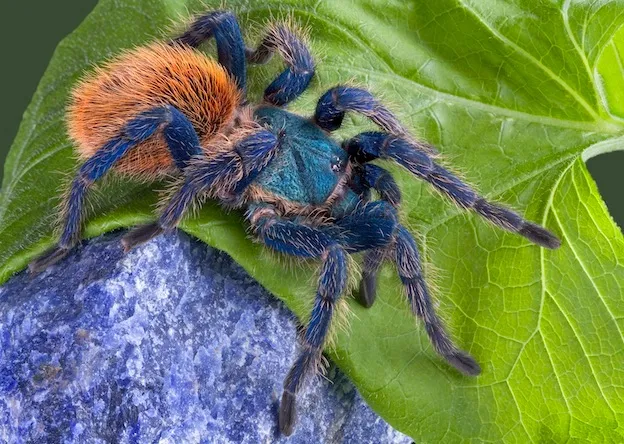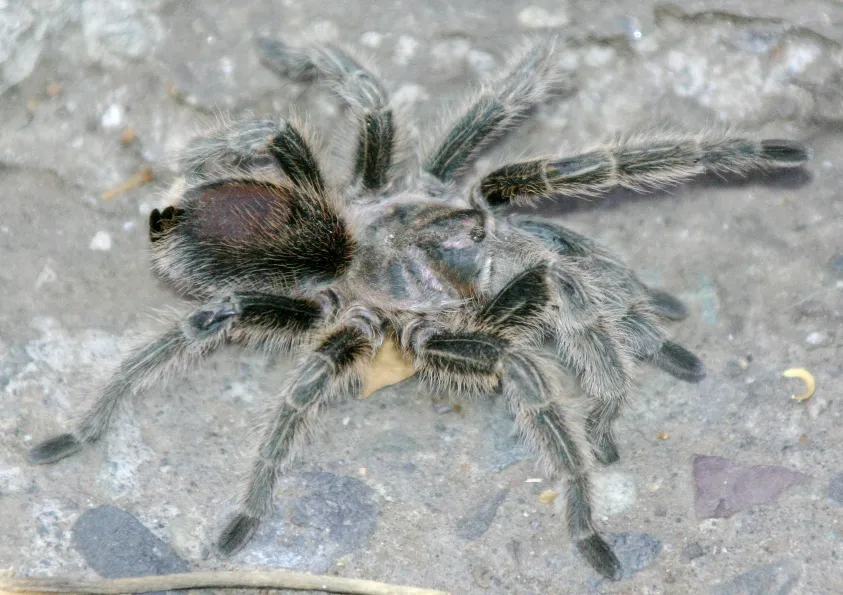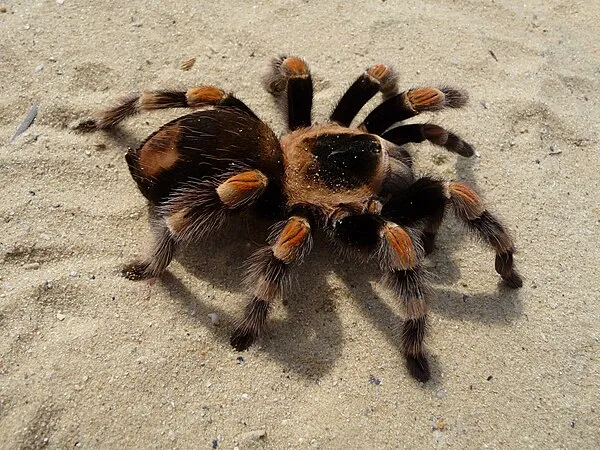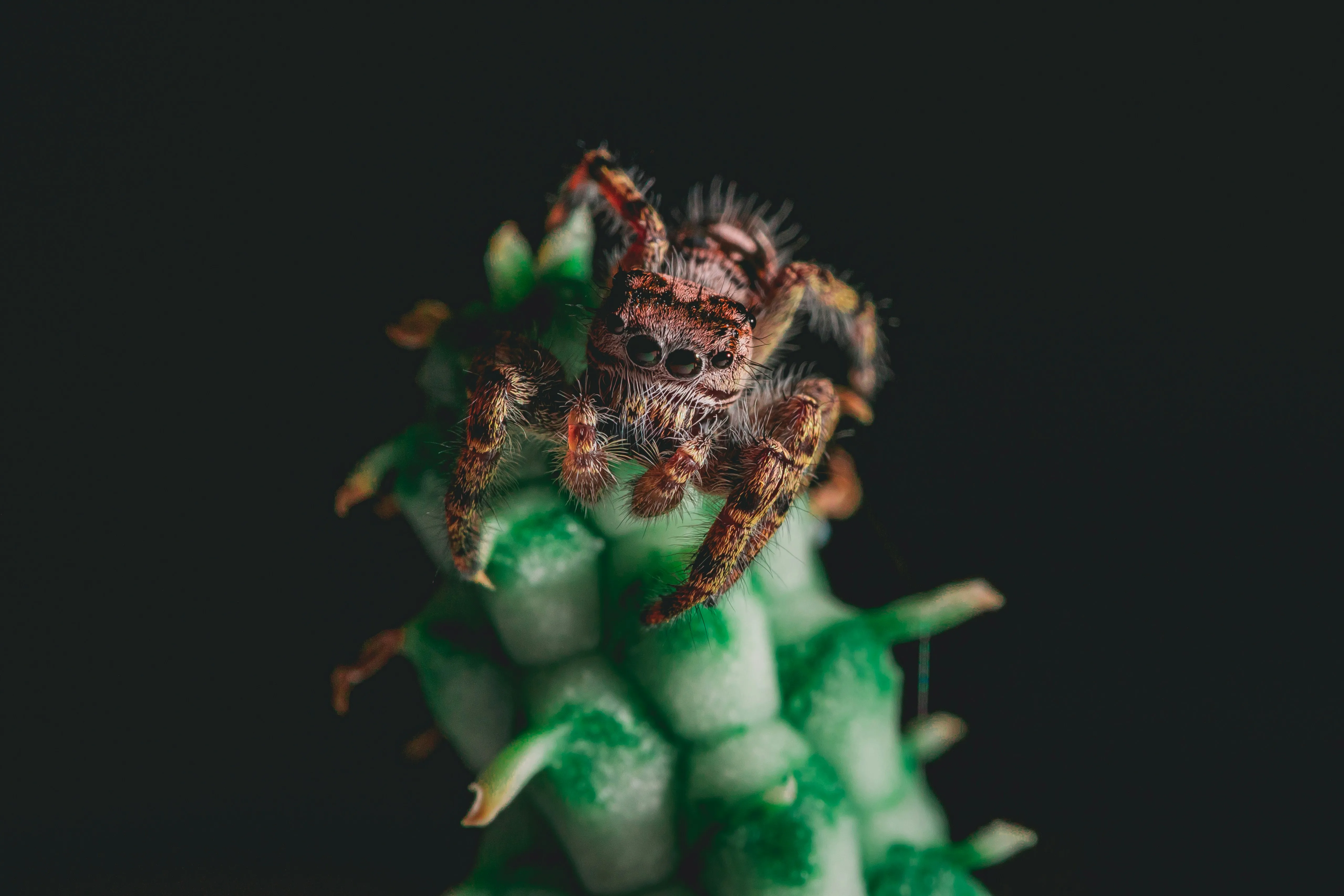What is a Tarantula
Tarantulas, belonging to the Theraphosidae family, are large and hairy spiders known for their impressive size and diverse appearances. These fascinating creatures are found in various habitats worldwide, primarily in tropical and subtropical regions. Despite their intimidating appearance, many tarantula species are popular pets due to their relatively docile nature and ease of care compared to other exotic animals. They are arachnids, characterized by eight legs, two body segments (cephalothorax and abdomen), and chelicerae, which are used for feeding. Tarantulas are nocturnal hunters, feeding on insects, and sometimes small vertebrates.
Key Features of Tarantulas
Tarantulas are distinguished by a number of key features that set them apart from other spider species. Their large size is perhaps the most noticeable characteristic, with some species reaching leg spans of over 10 inches. They are covered in setae, or hairs, which serve various functions, including sensory perception and defense. Many tarantulas possess urticating hairs, which they can flick off their abdomens as a defense mechanism. Their chelicerae, the mouthparts, are strong and capable of injecting venom, used to subdue prey. Tarantulas also have spinnerets at the end of their abdomen, which they use to produce silk for webbing and nesting.
Body Structure & Size

The body structure of a tarantula is divided into two main parts the cephalothorax (fused head and thorax) and the abdomen. The cephalothorax contains the eyes, mouthparts, and legs, while the abdomen houses the internal organs. Tarantulas exhibit a wide range of sizes depending on the species. Smaller species might have a leg span of just a few inches, while the largest can exceed 10 inches. Their size is a significant factor in their appeal as pets and also influences their feeding habits and habitat requirements. The size also varies depending on the age and sex of the tarantula, with females generally being larger than males.
Color and Markings
Tarantulas display a stunning array of colors and markings, which can vary greatly between species and even within the same species. Some are predominantly brown or black, providing camouflage in their natural habitats, while others feature vibrant blues, oranges, reds, and yellows. These colors often serve as a form of warning or camouflage, depending on the environment. Markings can include stripes, patterns, and patches that add to their unique aesthetic appeal. These visual characteristics are important for species identification and can also provide insights into their behavior and habitat preferences. Coloration may also change slightly after molting, with the new colors becoming more vivid.
Identifying Different Species
Identifying tarantula species can be a fascinating but sometimes challenging task. There are hundreds of different species, each with its own unique characteristics. Accurate identification requires a keen eye for detail and a good understanding of tarantula morphology. Observing the size, color, and markings are the first steps, but other features, such as leg length, hair patterns, and the presence of specific features like tibial spurs on males, are crucial for accurate identification. Specialized guides and resources are often used to distinguish between similar-looking species.
Common Tarantula Species

Several tarantula species are popular as pets, each with its own distinct characteristics. The Chilean rose hair tarantula (Grammostola rosea) is known for its docile nature and is often recommended for beginners. The Mexican redknee tarantula (Brachypelma hamorii) is admired for its striking orange and black coloration. The Gooty sapphire ornamental (Poecilotheria metallica) is famed for its brilliant blue and yellow markings but requires more experienced care due to its more potent venom. Other common pet species include the pinktoe tarantula (Avicularia avicularia) and various species of Theraphosa, which are among the largest tarantulas.
Identifying Tarantulas by Appearance
When identifying tarantulas by appearance, several features should be carefully examined. The overall size and leg span are significant indicators, as are the colors and patterns on the body. The presence or absence of certain features, such as urticating hairs or tibial spurs (found on male tarantulas), can help narrow down the possibilities. The shape and arrangement of the eyes and the texture of the legs and pedipalps (small appendages near the mouth) are also useful characteristics. Reference books and online resources are crucial for comparing your observations to the known traits of different species.
Tarantula Care Guide
Caring for a tarantula requires understanding its specific needs and creating an appropriate environment. While tarantulas are relatively low-maintenance pets, they still require proper care to ensure their health and well-being. This includes providing the right habitat, food, and maintaining a clean environment. It is essential to research the specific requirements of the species you own, as needs can vary. Regular monitoring of your tarantula’s health, behavior, and the conditions of its enclosure is a key part of responsible pet ownership.
Creating the Perfect Habitat

Creating the right habitat is crucial for the health and happiness of your tarantula. The enclosure should be large enough for the tarantula to move around comfortably. The size will depend on the species. A secure enclosure with a tight-fitting lid is essential to prevent escapes. Substrate, the bedding material, should be appropriate for the species and must be able to hold moisture. Provide hiding places, such as cork bark or artificial caves, where the tarantula can feel secure. Maintaining the correct temperature and humidity levels is also critical, and this can often be achieved with the use of a heat source and regular misting. Ventilation is also important to prevent the buildup of mold.
Feeding & Diet
Tarantulas are carnivores and feed primarily on insects in the wild. In captivity, they can be fed a diet of crickets, mealworms, roaches, and other feeder insects. The size of the prey should be appropriate for the size of the tarantula. Feeding frequency depends on the tarantula’s age and species, with younger tarantulas needing more frequent meals than adults. Provide a shallow water dish with fresh water at all times. Do not overfeed your tarantula, as this can lead to health problems. Remove any uneaten prey within 24 hours to prevent stress on the tarantula and to keep the enclosure clean.
Health & Common Issues
Tarantulas can experience health issues, including dehydration, parasitic infections, and injuries from falls or prey bites. Dehydration is a common problem in captivity and can be prevented by providing a water dish and ensuring proper humidity. Parasitic infections are less common but can be addressed with proper hygiene and quarantine of new arrivals. Injuries can occur from falls or struggles during feeding. If you notice any health problems, such as lethargy, loss of appetite, or unusual behavior, consult a veterinarian experienced in arachnids. Molting is a natural process, but it’s crucial to ensure conditions are ideal during this period.
Handling & Safety

Handling tarantulas should be approached with caution, as even docile species can bite if they feel threatened. It is often best to avoid handling tarantulas unless absolutely necessary. If handling is required, do so near the ground to prevent injuries from falls. Always be gentle and avoid sudden movements. Be aware of the potential for urticating hairs, which can cause skin irritation. Wash your hands thoroughly before and after handling a tarantula. Research the temperament of your specific species before handling it, and always prioritize the safety of both yourself and your pet. In some instances, it is safer to use a soft brush to gently guide the tarantula into a container if relocation is needed.
